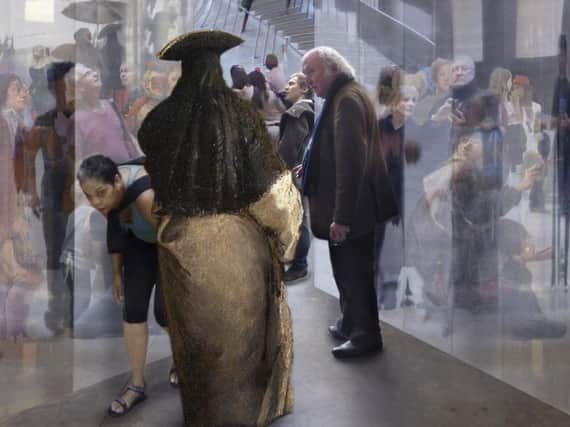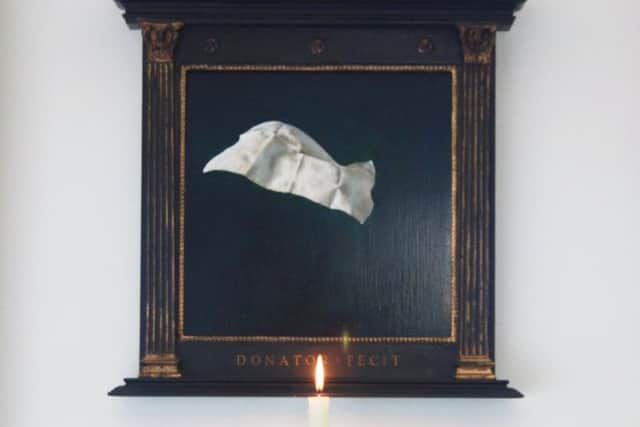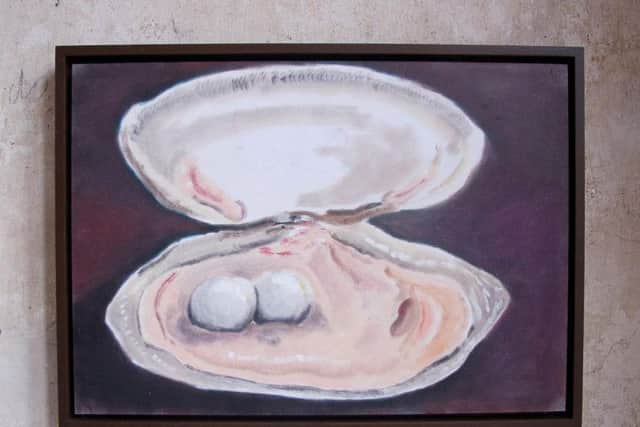Art reviews: Alan Smith | Jane Frere | Andrew Sim | Helen McCrorie, Edinburgh


Alan Smith: The New World, Summerhall, Edinburgh * * * *
Jane Frere: Exit – 100 Days of Khaos!, Summerhall, Edinburgh * * * *
Andrew Sim: New Sodom Will Be A Shining City On A Hill, Summerhall, Edinburgh * * *


Helen McCrorie: If play is neither inside not outside, where is it?, Collective, Edinburgh * * * *
n 1991, after a long career working in a range of media in Scotland and abroad, the artist Alan Smith made a conscious decision to distance himself from art. He returned to it 20 years later, after treatment for lung cancer, making the body of work currently on show at Summerhall. Sadly, the illness returned, and Smith passed away in May.
Of course, this casts a long shadow over the show, which is one of the highlights of the visual art programme this festival at Summerhall. But, while it can be read as a man’s contemplation of his own mortality, it is also more than that. Using digital photomontage, which Smith had not used before, he constructs a series of scenes which together add up to a larger one, a recreation of Tiepolo’s 1790s fresco, Il Mondo Nuovo, using contemporary figures.


Tiepolo’s fresco was painted in the dying years of the once-powerful Venetian Republic, a time of great uncertainty about the future. Smith, who worked on the series over the summer of 2016, before and after the Brexit referendum, felt the connection to our own situation. He has created a powerful image of people in transition, personally, politically, gathering uncertainly on the metaphorical shore waiting to see what fresh horror awaits us.
In the nearby War Memorial Gallery, Highland-based artist Jane Frere tackles a similar theme. This show follows previous Summerhall festival projects in the Anatomy Lecture Theatre foyer addressing issues of data harvesting, the Brexit referendum and the election of Donald Trump. Exit – 100 Days of Khaos! was made in the 100 days leading up to 29 March, the original date set for Britain’s exit from the EU.
A mural – Pity the Nation – occupies the entire back wall of the gallery, a milling crowd of humans and animals, surging towards the future, but somehow at the same time directionless. Some panic, some are angry, most just go with the flow. Background work occupies the wooden display cases: source materials, sketches, the poems from which the title was taken –the first by Kahlil Gibran, the second a response by Laurence Ferlenghetti.
The other works in the show make use of common themes and motifs: a spiral of text, collected from news bulletins and social media during the 100 Days, laid out like the rings of a tree; animations using Frere’s figures by Georges Elio Thibault; a collaged sound work (catch Theresa May saying “Together we will build a better Britain”), sculpture, prints, instagram hashtags. It’s a passionate, angry work, unashamed to take up a position, or to remind us that what the Greek’s meant by “khaos” is also what we would understand as “the void”.
Engagement, of course, takes many different forms. In his first solo show, New Sodom Will Be A Shining City On A Hill, Glasgow-based artist Andrew Sim reflects on some of the events which have shaped his experience as a queer person, from the Aids epidemic and the Section 28 debate to the passing of gay marriage legislation. There is a sense of a community in flux, hetero- and homo-normative relationships on one side, gender fluidity and queer radicalism on the other.
While he tells us that this is the background to the show, the works themselves are more subtle. There are clouds, fountains, an apple tree in flower, a white plastic Christmas tree, what might be the insides of caves – personal lexicon of images the significance of which are perhaps known only to artist.
It is, perhaps, a reflection on what happens when the personal is political, when it is impossible to separate one’s own developing identity from events which are happening in the public sphere. Like Smith and Frere, Sim is looking back and looking forward. He has more questions than answers, but the title of his show perhaps points towards a more affirmative, inclusive future.
The personal and political are written through Helen McCrorie’s beautiful film “If play is neither inside not outside, where is it?” in the Hillside space at Collective. Shot over several years, it records a group of children taking part in a child-led outdoor playgroup in the grounds of a former military camp at Cultybraggan in Perthshire. The site is now in community ownership, while the central bunker is in private hands, and in the process of being turned into a data storage facility.
Sensitively filmed, it lets the visuals do the work. The children take the initiative (no adults appear on screen) wandering, playing, exploring in the bucolic world of bumblebees and ripening apples which has grown up around the Nissan huts.The contrast is further explored by McCrorie’s footage from inside the bunker, grey, empty spaces, concrete corridors and winking electronics.
But in the film, the true data gatherers are the children, In a place which is a relic of past conflicts, they are tomorrow’s adults, eagerly embracing the future.
Summerhall exhibitions until 27 October, (Extinction Rebellion ends 25 August); Helen McCrorie until 6 October
